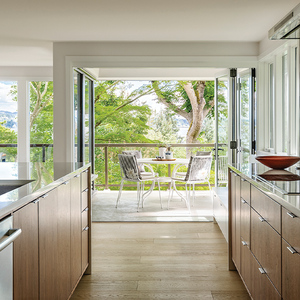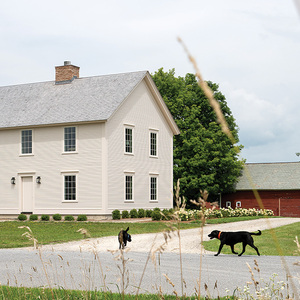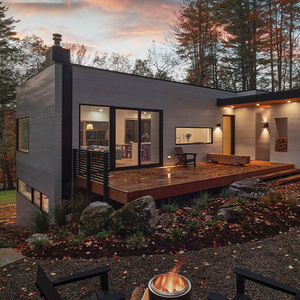*
on a cathedral ceiling, joists 2′ on center, r-38 insulation. customer would like us to install a 1 x 4 t&g ceiling directly to joists, wondering if we need to install sheetrock first, and fire tape, then install t&g.
Discussion Forum
Discussion Forum
Up Next
Video Shorts
Featured Story

Key proposals for the next edition of the International Residential Code tackle room sizes, stair specs, emergency egress, and deck guards, among other requirements.
Featured Video
SawStop's Portable Tablesaw is Bigger and Better Than BeforeHighlights
"I have learned so much thanks to the searchable articles on the FHB website. I can confidently say that I expect to be a life-long subscriber." - M.K.
Fine Homebuilding Magazine
- Home Group
- Antique Trader
- Arts & Crafts Homes
- Bank Note Reporter
- Cabin Life
- Cuisine at Home
- Fine Gardening
- Fine Woodworking
- Green Building Advisor
- Garden Gate
- Horticulture
- Keep Craft Alive
- Log Home Living
- Military Trader/Vehicles
- Numismatic News
- Numismaster
- Old Cars Weekly
- Old House Journal
- Period Homes
- Popular Woodworking
- Script
- ShopNotes
- Sports Collectors Digest
- Threads
- Timber Home Living
- Traditional Building
- Woodsmith
- World Coin News
- Writer's Digest


















Replies
*
what are the rafters ? are they 2x12.. what ever they are.. the r-38 sounds like a cold climate..so you have a thermal break at each rafter of about r-10 to r-12..
this will photograph in certain cold spells, and be visible on the T&G.. you don't need the drywall.. unless you have some peculiar fire code requirement..
but you should cover the bottom of the rafters with one inch foil-faced ISO.. and tape the joints..
you could then furr the rafters to hold the iso and provide excellent nailing for your ceiling..
now your ceiling section will be r19 at the rafters and r45 in the bays..
b but hey, whadda i no ?
*Godfrey...No drywall needed unless you put up the foam like Mike says...Mike....the fire code here makes us cover foam with gypsum board...then you could use T&G...near an estimate for just such a case...Now I have to tell the customers about the $750 added firecode charge...the streamer,aj
*aj.. you're right of course.... i forgot about the having to cover.. since our ceilings are always blueboard.. and they're covered anyways..regular 1/2 inch meets firecode..unless you need One-hour...also ... my new source, American Foam... makes fire treated EPS, cheaper than ISO,, not quite as good R-value... but still a great thermal break.....good enough that i'm changing our spec for cathedral ceilings to use it instead....
*Mike...of course I'm right...(jesting here!)...Would the fire treated foam need a lid...we made need to check that out as we do quite a bit of pine T&G ion ceilings and some walls...just up stream from ya (Ala Gabe...jesting again!!!!)aj
*the ion ceilings are sorta like force fields...smoke and mirrors involved and such....I think it's time to toss dwarf around here...a go do some foot stompin in the stream,aj
*Wouldn't the addition of foam below fiberglass insulation move the dew point line closer to the interior of the structure and increase the likelihood of condensation deeper within the fiberglass, resulting in water stains on the ceiling?The foil will limit the passage of vapor if perfect, but the penetration/interruption of the foil is likely due to fasteners, electrical boxes etc.Jeff
*Jeff...The idea with the foam on the inside is to get max winter radiant help in the interior so comfort is felt at a lower air temperature (along with the replacement of plastic vapor retarder)...Where I live the winter is more of a bear than the summer heat...So if the foam is strapped, then all electric could be in front of the taped foam...The other point is the home occupants need to not pump moisture into the air...I have only found moisture problems in homes that had some form of moisture being pumped in that could have been controlled...Another point is exterior foams may need rainscreens between it and siding to deal with exterior sources of wetting and also most foil faced foams are not made to breathe like tyvek does...(with the exception of foam sold for placement under vinyl residing..ie. Amoco R-1 4'x50' fan fold foam with pin holes poked in it.)...So the sum effect hopefully above is to receive three benefits where just one existed before...If you have more ideas to add, I'd love to here them...Also see the radiant threads that are ongoing...near the stream,ajThe foam on the outside is probably a safer method for those that have uncontrolled moisture and on that point I agree...It's all the talk of radiant that has me thinking that I may want the foil helping the inside warm objects (me) feel warm in the winter heating season.
*OK, I understand that, but I learned a long time ago that you want the water vapor migrating to the exterior to hit dew point near thei outerpart of the insulation, so it can escape through evaporation more easily. Doesn't the combination of foam and fiberglass (including the reverse, putting foam sheathing over fiberglass insulation) do strange things to the dew point line?PS - My recollection on the effective radiation of heat back from a foil surface requires an airspace between the foil and the finish - isn't that correct? (All of those 'foil-and-bubble wrap' insulation types used to indicate that this was a requirement).Jeff
*Yes jeff...the airspace is needed and is right where I would think it would be wanted...Here's the layers...paint, drywall, 3/4" strapping(b air space), taped foil faced insulation, framing with fiberglass or cellulose, exterior sheathing, housewrap, primed siding, the great outdoors...Or radiant outside to aid in summer cooling...Paint, drywall, plastic,framing with choice ot insulation, exterior sheathing of foam using let in bracing and plywood corners, strapping (b air space), primed siding.I am starting to like the first choice...near the stream,aj
*here's a mock-up i made of a wall section for my electrician...note the 4 inch square box with a nailing ear.. and an inch&a-half palster collar..this leaves almost 3 inches behind the elec. box for cellulose (or fiberglass).. this is a 7 inch wall section.. vs. a 6.5 inch section for a 2x6 wall.. but no thermal break...
*Mike...that's a 3 1/2" studded wall right....so you are r-.5 + r-13 + r-7.2 + r-2.8 = r-23 to r-24...nice wall....in 2x6 it would be r-30 or so...near the stream, watching Mike "Smith"aj